Table of contents
- Setting up
- Installation
- Setting up BIOS
- Formatting hard drive
- XP installation
- Sound Blaster installation
- Disabling sticky keys
- Disabling firewall and updates
- Setting monitor refresh rate
- Disabling screensaver and monitor turnoff
- Loading the utilities CD
- Voodoo driver installation
- Java Runtime Environment installation
- Disabling notifications
- Setup complete!
Setting up
ROMs
This config depends on ROM files, which we can't distribute. Filenames and hashsums for the needed ROM files are provided here:
Windows XP CD
You will need this specific CD for Windows XP SP3 Home Edition.
File: en_windows_xp_home_with_service_pack_3_x86_cd_x14-92413.iso MD5: a22030df1988445436f300bc29c32dd2 SHA-1: 5a6b959ad24d15dc7ebd85e501b83d105d1b37c6
Utilities CD
MD5: 9C414368B6366048CFC50BF27B5B4C54 SHA-1: C5C3AB337B23DAA285C939AEB926B7C90B94CD95
Contains:
- Amigasport 3.0 XP driver (for the Voodoo 3 card)
- Java Runtime Environment 8 from OpenJDK
- Adobe Flash Player Standalone 29.0.0.171
Created using a bash script for making reproducible .ISO images.
Will probably need more but we can release a version later with more stuff if people need something.
Config
You can download and modify a premade windowsxp.cfg file (change the paths to point to the correct files, with the Windows XP utilities .iso replaced with the name of the Windows XP utility disc .iso image you created or downloaded above).
You can optionally also make one yourself using the following specifications. If something is not specified, leave it at default. You may not get some of the options when you make a new config; if this happens, click "OK" to save it and then try editing it again.
- Machine: [Slot 1] Gigabyte GA-686BX
- CPU: Intel Pentium II/450
- Memory: 256 MB
- Synchronize time to host clock: Checked
- Device: 3DFX Voodoo 3 3000
- Click on the button with the tools and set Render threads to 1
- Speed: Fast VLB/PCI
- Voodoo Graphics: Unchecked
- Device: Sound Blaster AWE32
- Click the tools button and set OPL to NukedOPL
- All options unchecked
- LPT Device: None
- HDD: [IDE] Standard IDE
- FDD1: 3.5" 2.88M
- FDD2: 5.25" 1.2M
- CD Model: PCemCD
- CD Speed: 72x
- Drive 0 Primary Master (C:): Hard drive
- Make a new hard drive with Custom type: Sectors 63, Heads 16, Cylinders 8374 (will result in 4121 MB)
- Or grab it here if you don't want to create it yourself
File: windowsxp.img MD5: 43AEBF8BE7803A539B236364E29E70AE SHA-1: A0BC9411BF4A3F623B4FCAF532AD12EA530E35A4
- Drive 1 Primary Slave (D:): CD-ROM
- Mouse: 2-button mouse (PS/2)
Once this is made, find the config that you just named in
~/.pcem/configs/ and open it in a text editor. Set cdrom_drive = 200 and set cdrom_path = /path/to/en_windows_xp_home_with_service_pack_3_x86_cd_x14-92413.iso;/path/to/windowsxp-utilities.iso, substituting in the proper paths for the XP and utilities CDs.
In
~/.pcem/pcem.cfg, set confirm_on_stop_emulation = 0.
This config depends on ROM files, which we can't distribute. Filenames and hashsums for the needed ROM files are provided here:
NVR
This chipset does not pull the default NVR from a file - just make sure that in
~/.pcem/nvr/ there is no NVR named after your config file (e.g. if your config is named windowsxp, delete any file called windowsxp.ga686bx.nvr.)
If you've launched the machine before, you'll need to delete the
.nvr file as well as ~/.pcem/roms/ga686bx/flash.bin.
Windows XP libTAS movie file
At this point, you can run the Windows XP installation movie if you want our exact hashes:
Note that libTAS 1.4.4 and older has a memory leak caused by OSD in long movies, so you'll need to disable it in Video -> OSD.
Installation
The following section outlines every step needed to recreate the outcome generated by the Windows XP installation verification movie file if you need to perform the installation manually. This should not be necessary as playing back the movie is much more convenient and the descriptions below are primarily here to provide a comprehensive overview of all of the steps the movie performs.
Setting up BIOS
Now you can boot up your configuration. On the bootup screen, press the 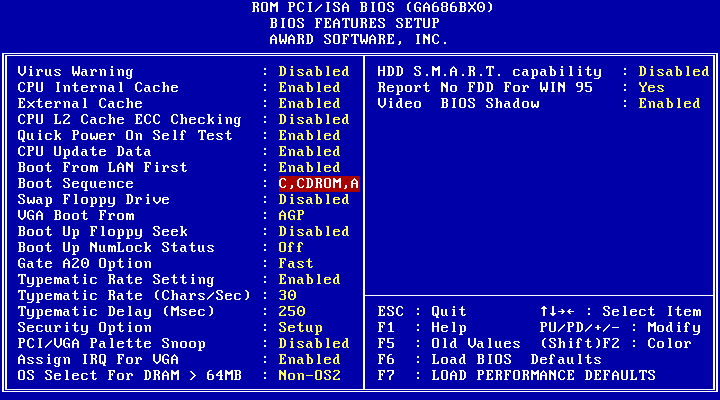
Delete key to go to the BIOS menu. Select BIOS Features Setup and press Enter then go down to Boot Sequence and use PageUp/PageDown to select C,CDROM,A:

This will allow you to boot from the XP CD at first because the hard drive is blank, and then when the hard drive becomes bootable it will use that instead. Press
Escape and then select Save & Exit Setup on the main menu. Press Y and then Enter at the prompt.
Formatting hard drive
When the PC reboots, just wait and it will automatically boot from the XP CD. Once it's done loading you will see this screen:
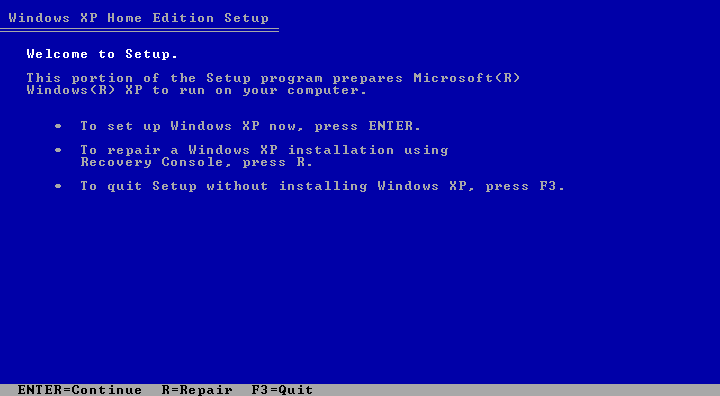
Press
Enter to continue, and press F8 to agree to the license agreement.
The setup will now partition and format the hard drive for you.
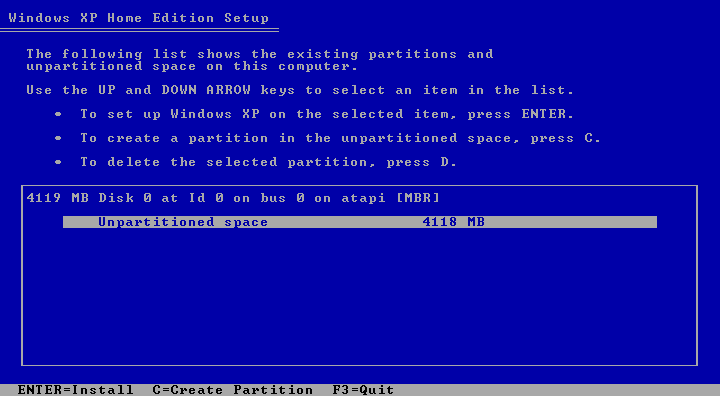
Press
Enter to partition the unpartitioned space.
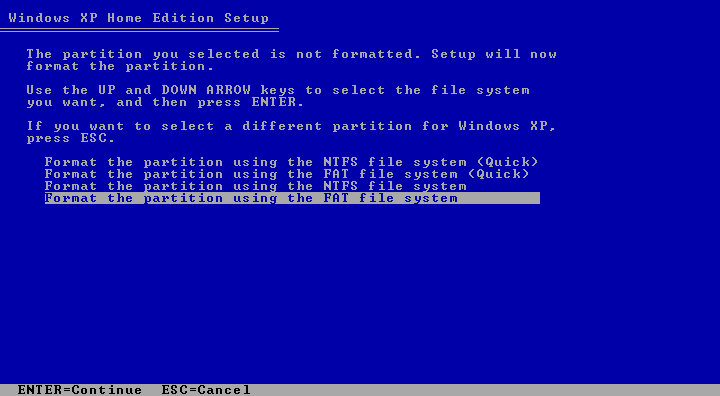
Select Format the partition using the FAT file system, press
Enter, and then press Enter again to format the partition.
XP installation
Once the formatting is done, it will start copying files over. This will take a while.

When it's done copying files, the PC will reboot and put you into the proper installer. It will install some more things, and then put you on this screen.
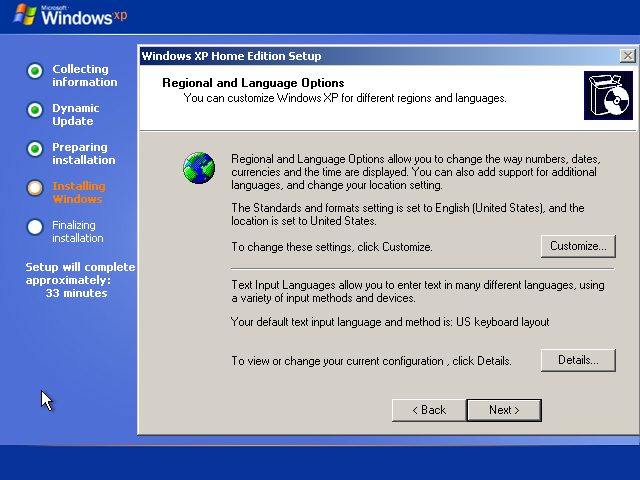
We will be installing language packs so languages like Japanese will appear correctly. Click Customize... and go to the Languages tab.
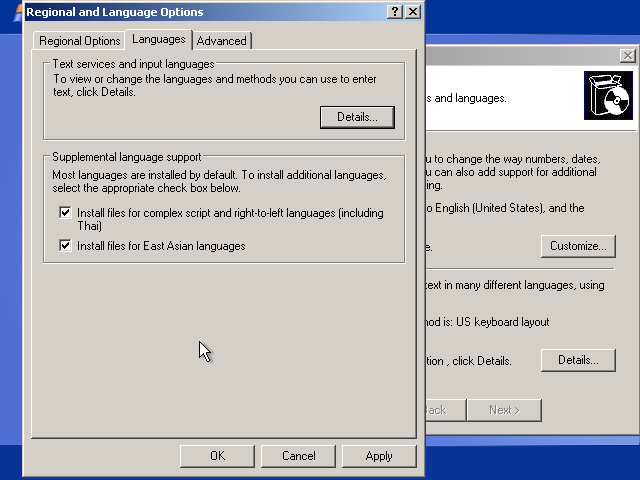
Check both options in this window. When it pops up a message about hard drive space, just click OK. Once both of these options are checked, click OK. Wait for it to install the packs. Once it's done, you can click Next.
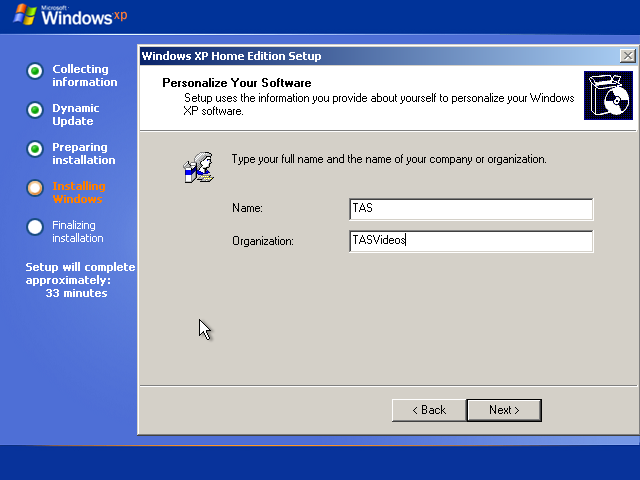
Put
TAS and TASVideos for Name and Organization respectively, and click Next.
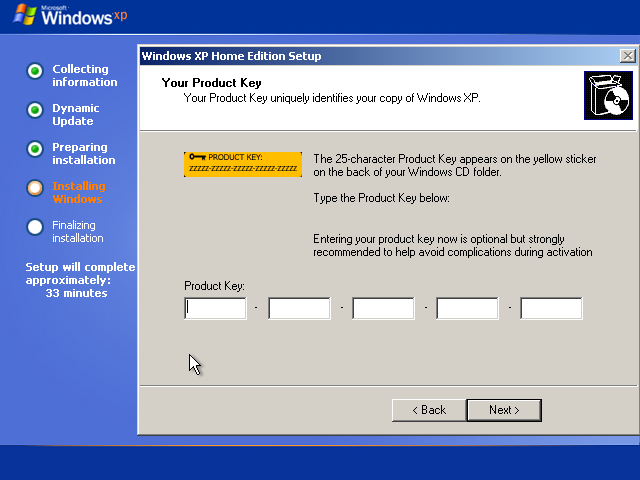
On the product key screen, do not put in a key! Click Next and it will pop up a window asking you if you want to enter your product key now. Click No on this. This will allow you to have a 30 day trial before you need to enter one. On the Computer Name screen, just click Next.

On the time screen, select (GMT) Greenwich Mean Time for the time zone and uncheck the daylight savings box. Don't worry about the time and date, libTAS will inject its own time. Click Next.
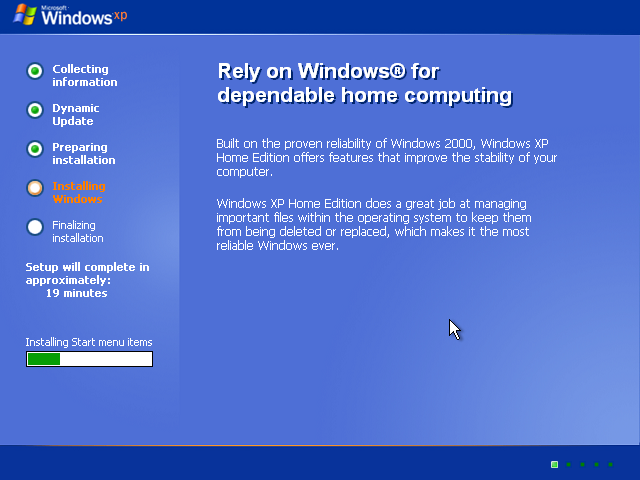
The installer will now take a while to finish up the installation. Enjoy the Windows XP fun facts!
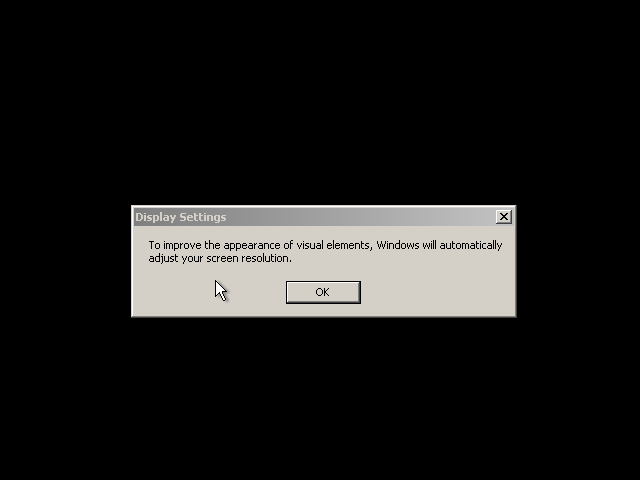
Once it's done installing, it will reboot again. Press OK to adjust the screen resolution and it will go up to 800 x 600. Press OK again after it's changed.
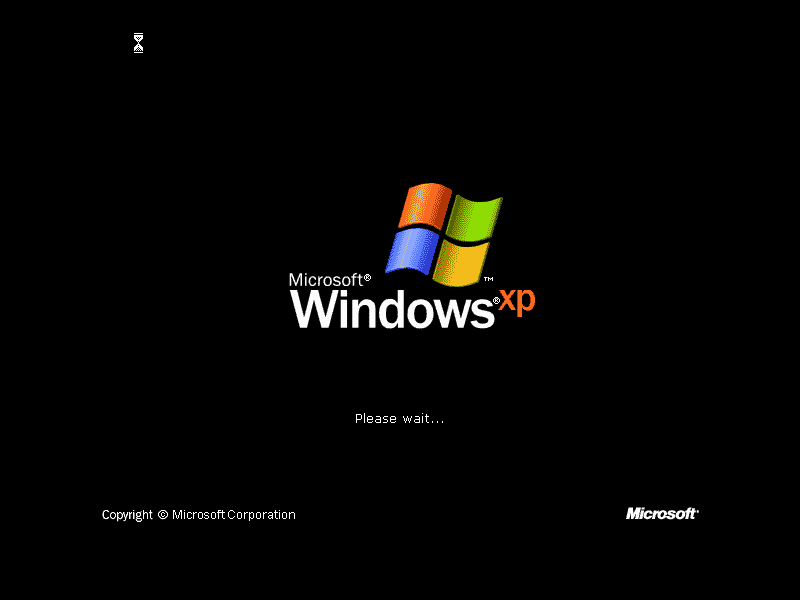
At this point, PCem is known to cause Windows XP to freeze sometimes, causing the following OOBE sequence to never show up. If that happens, just reboot the machine and you'll get into the usual Windows XP desktop environment which works normally.
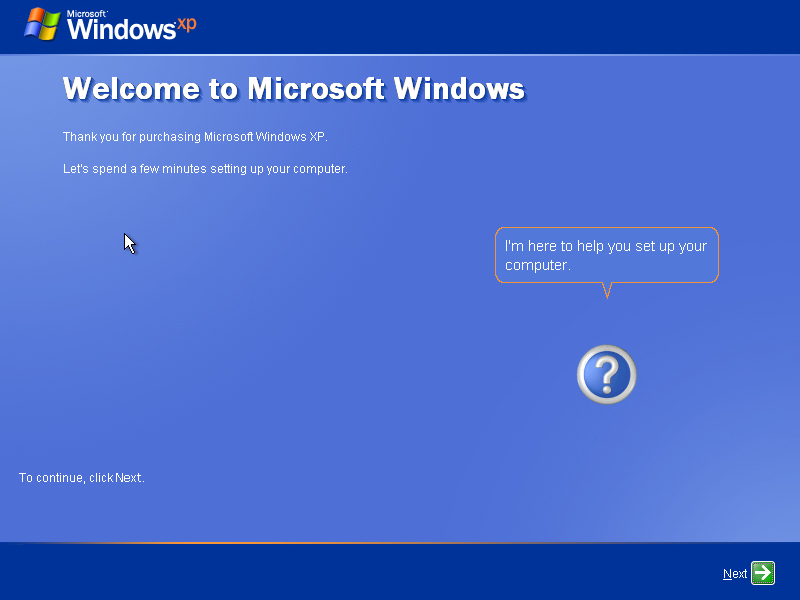
It will then play a little video and put you on this screen. Click Next.

Click Not right now for automatic updates and click Next.
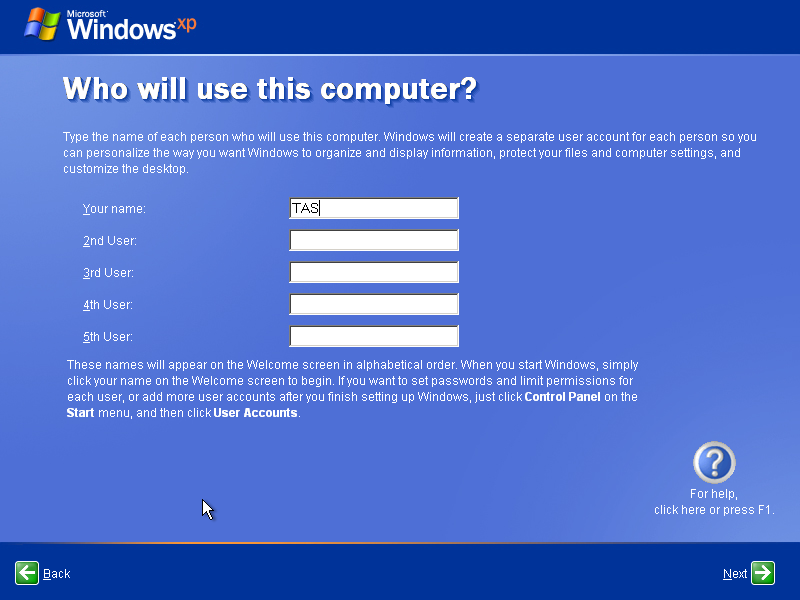
Enter TAS for your name and click Next. Click Finish on the next screen.
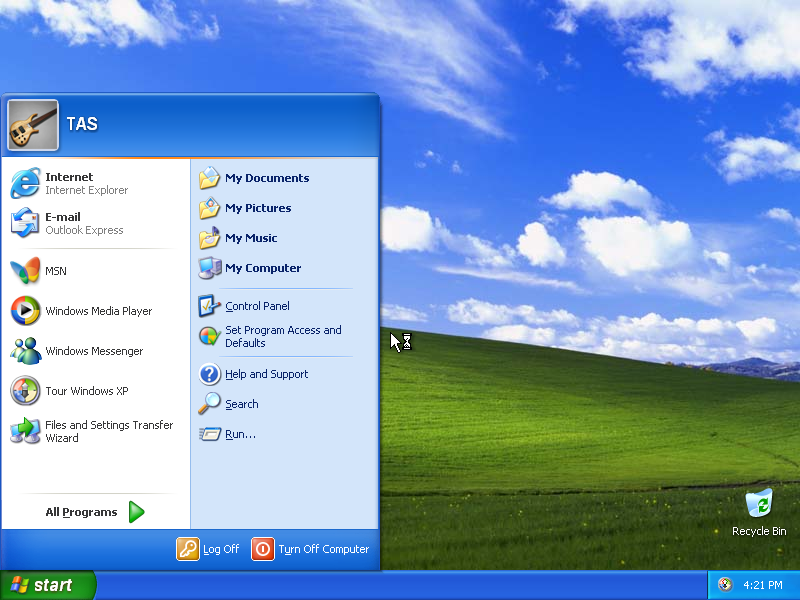
Once it's done loading everything, you'll be booted out to this familiar desktop.
Sound Blaster installation
Windows XP does not automatically install the sound card, so we have to do it manually.
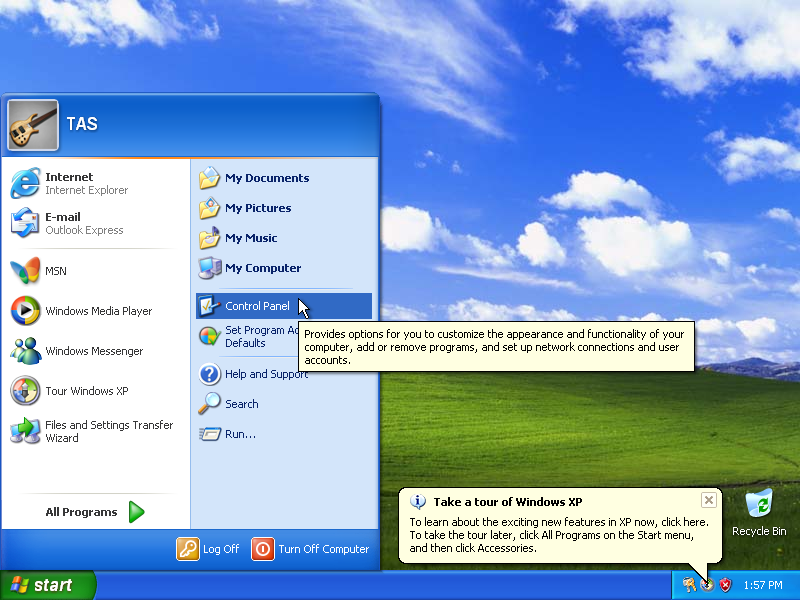
Click the Start button and then click Control Panel.
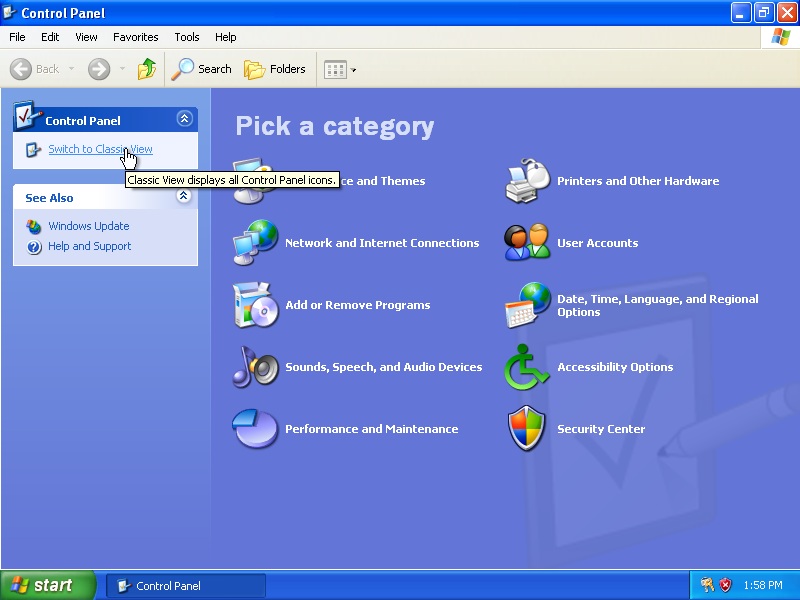
In the Control Panel, click Switch to Classic View.
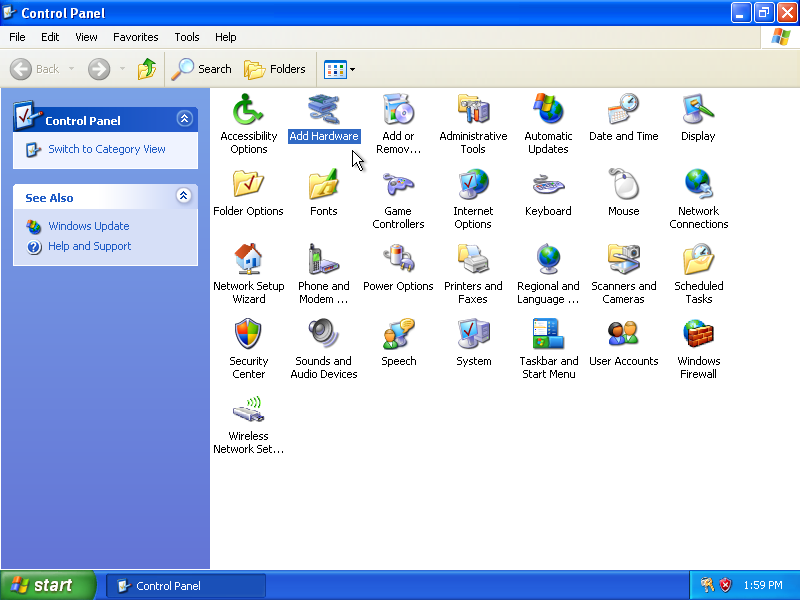
Now double-click Add Hardware. This will open the Add Hardware Wizard. Click Next on the first screen.
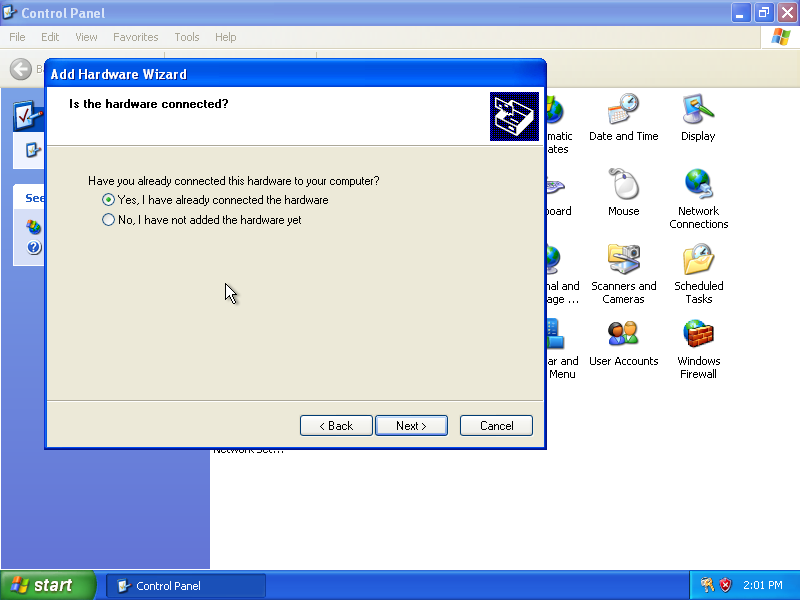
The wizard will start looking for hardware. Choose Yes and click Next.
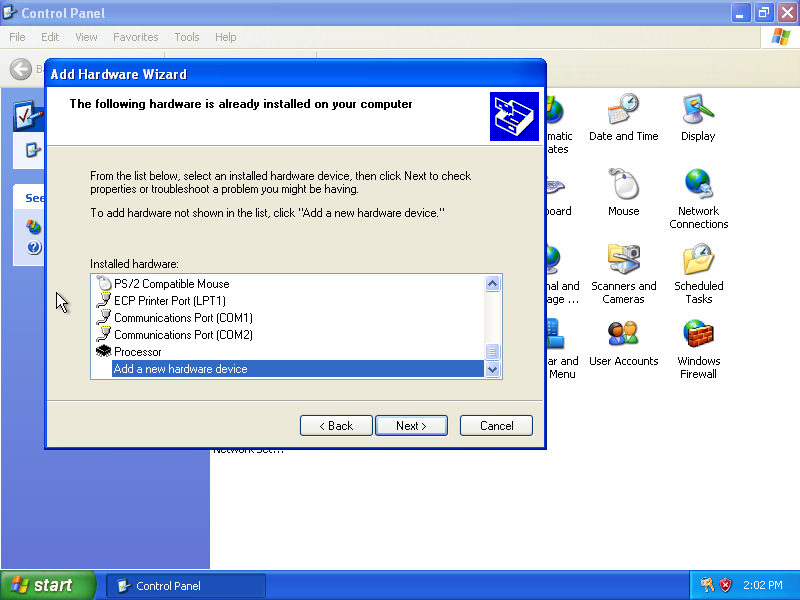
On the next screen, scroll down to the bottom of the list and select Add a new hardware device. Click Next.
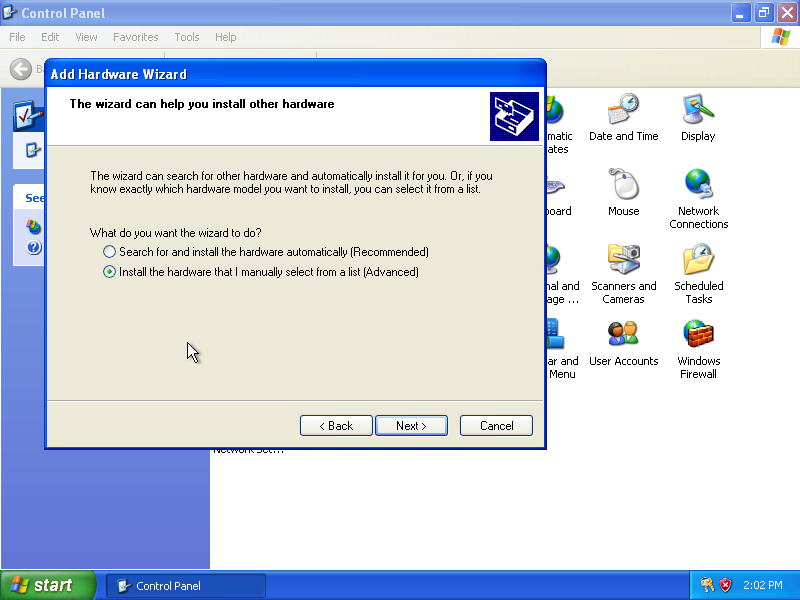
Choose Install the hardware that I manually select from a list and click Next.
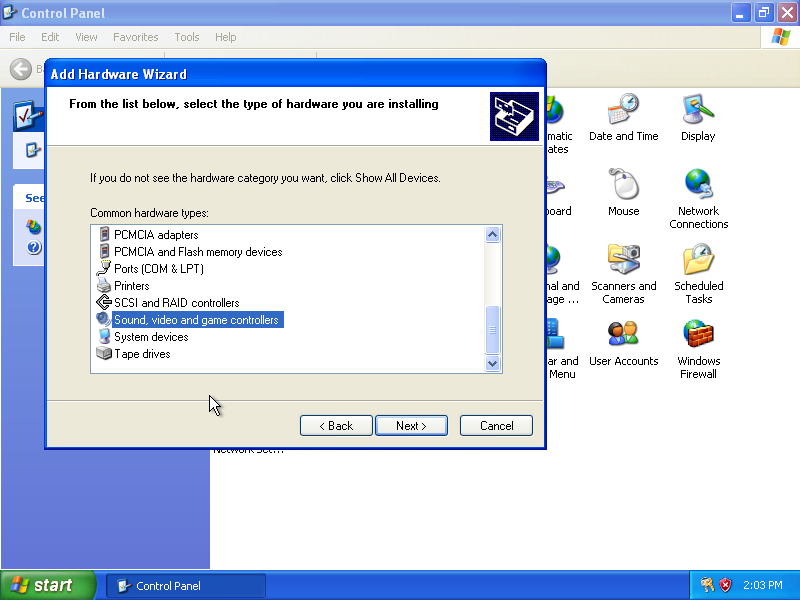
Scroll down the list, pick Sound, video and game controllers and click Next.
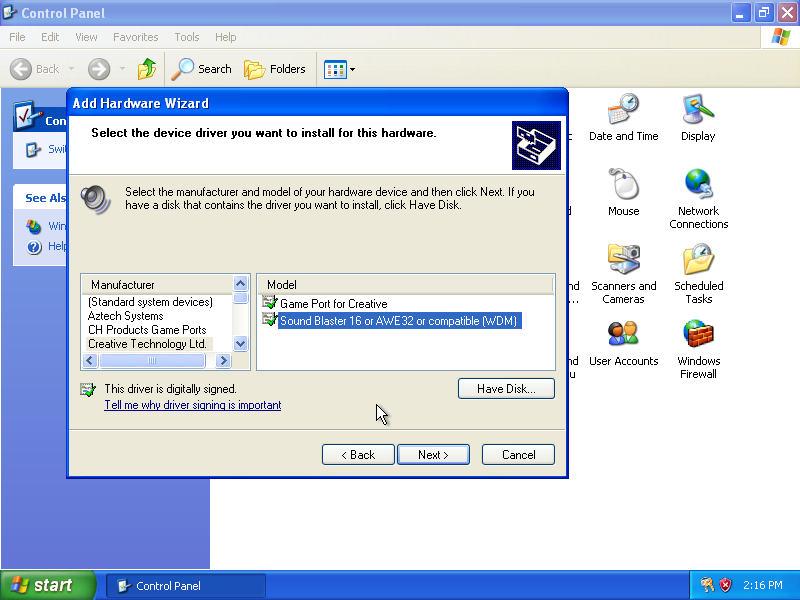
Now pick Creative Technology Ltd on the Manufacturer list and then pick Sound Blaster 16 or AWE32 on the Model list. Click Next and then Next again. Windows will now install the drivers for the Sound Blaster AWE32 card.
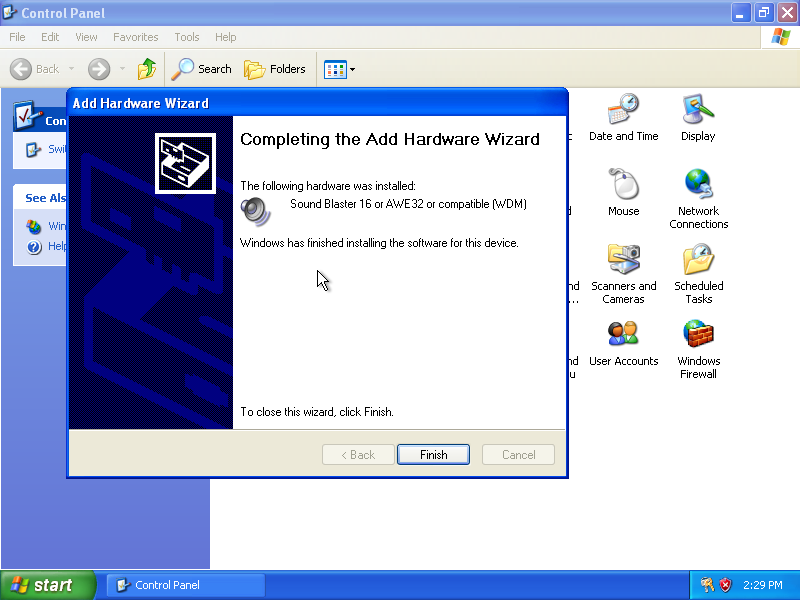
You should see this screen at the end. Click Finish.
Disabling sticky keys
Double-click Accessibility Options and click the Settings button for StickyKeys.
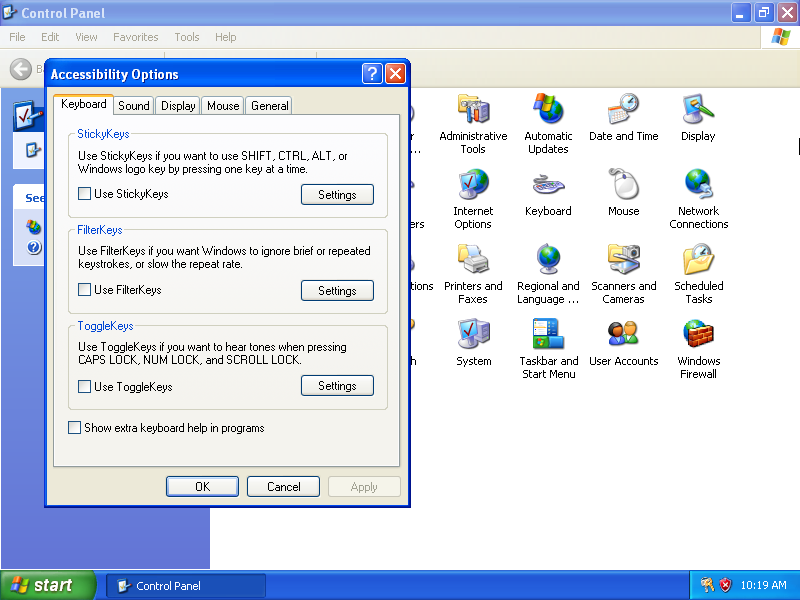
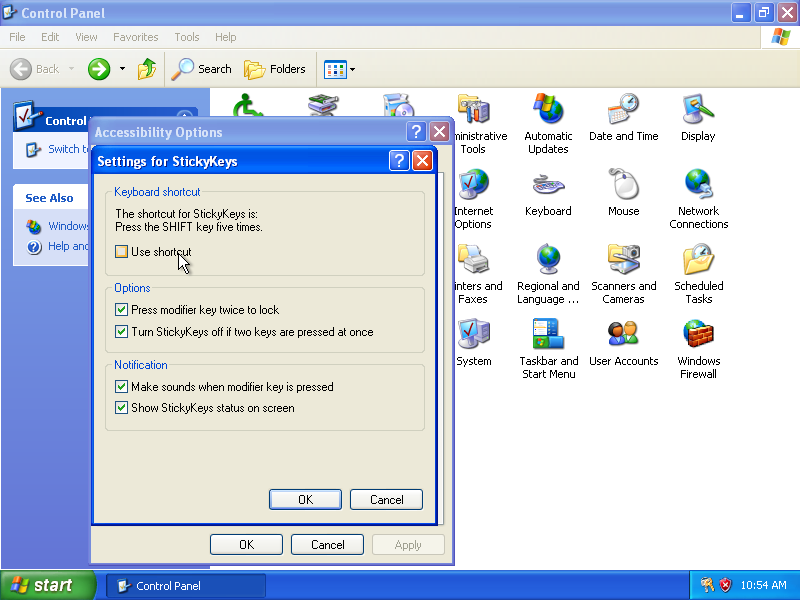
Uncheck Use shortcut and hit OK twice to exit back to the Control Panel.
Disabling firewall and updates
Double-click Windows Firewall.
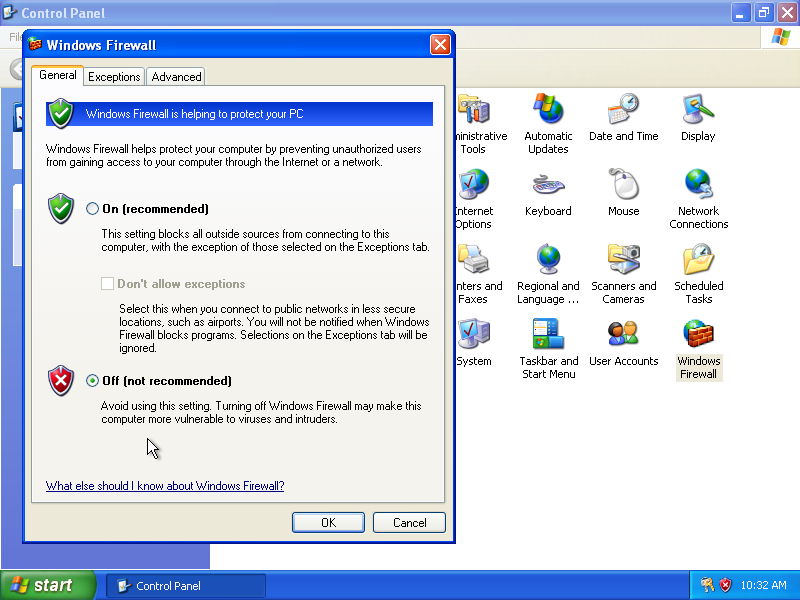
Select Off (not recommended) and click OK.
Double-click Automatic Updates.
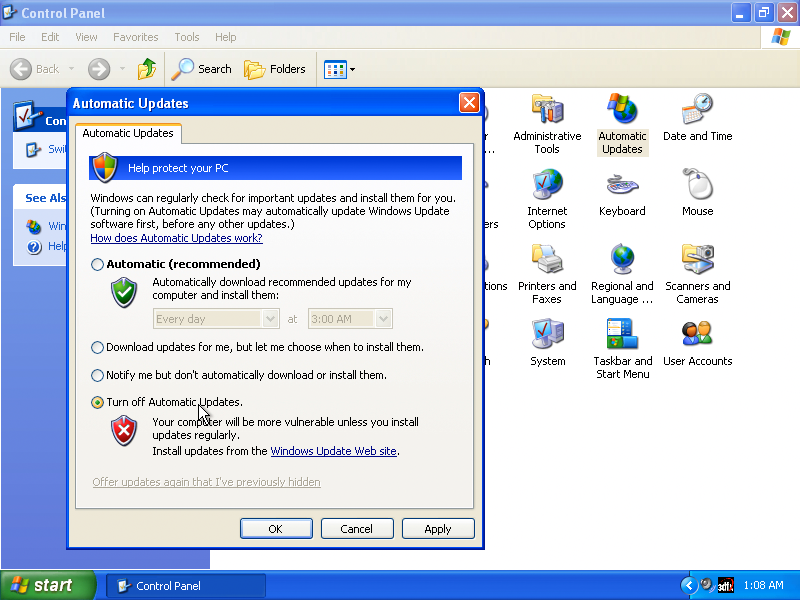
Select Turn off Automatic Updates and click OK.
Setting monitor refresh rate
Double-click Display and go to the Settings tab. Hit Advanced.
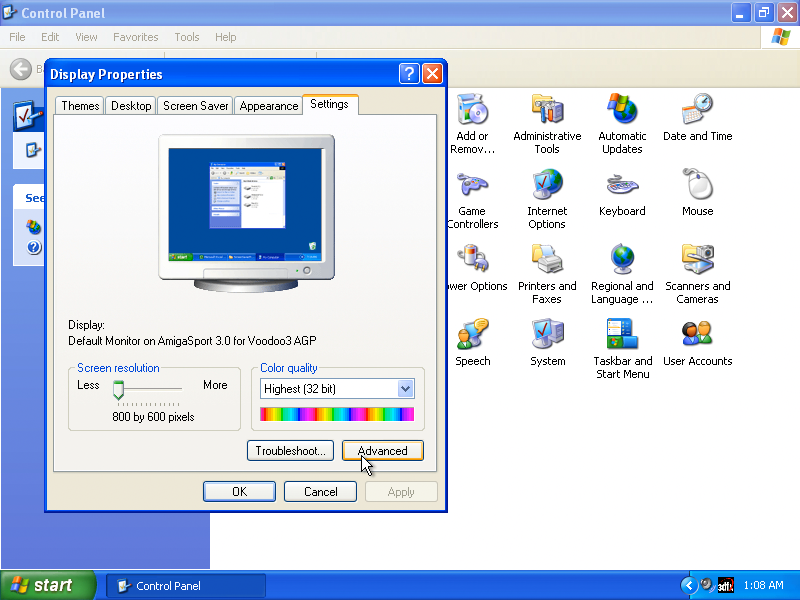
On the appearing window select the Monitor tab and pick 100 Hertz refresh rate, because PCem is running at 100 frames per second.
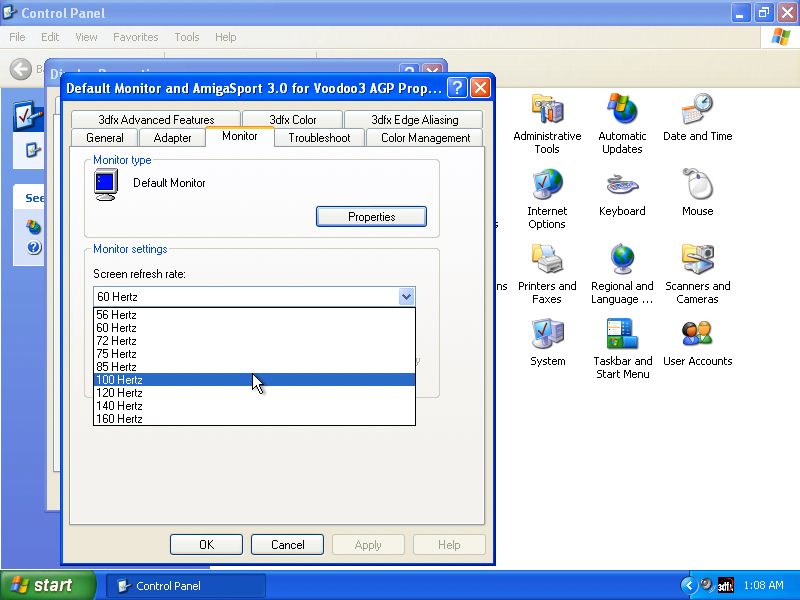
Click OK. On the Monitor Settings confirmation dialog click OK too.
Disabling screensaver and monitor turnoff
While still in the Display settings, go to the Screen Saver tab.
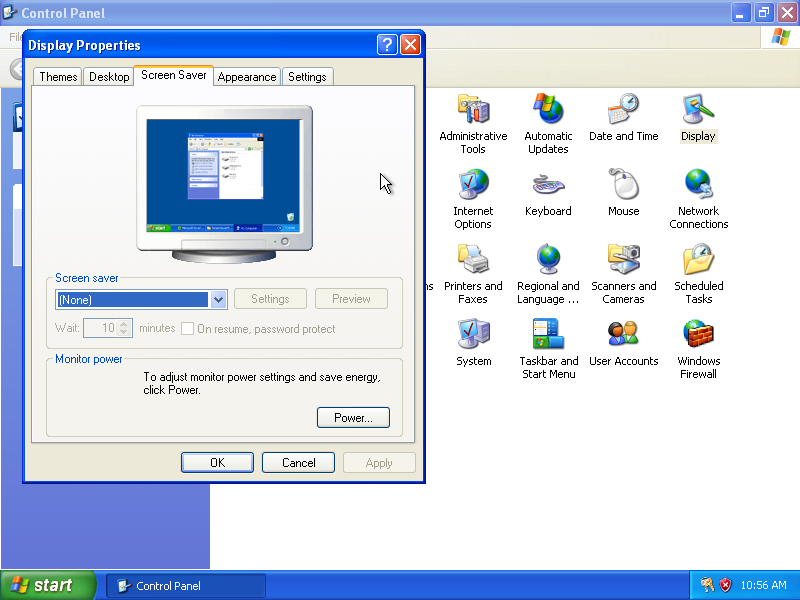
Change the Screen saver dropdown selection from Windows XP to (None) and click OK.
Double-click Power Options and set the Turn off monitor selection to Never.
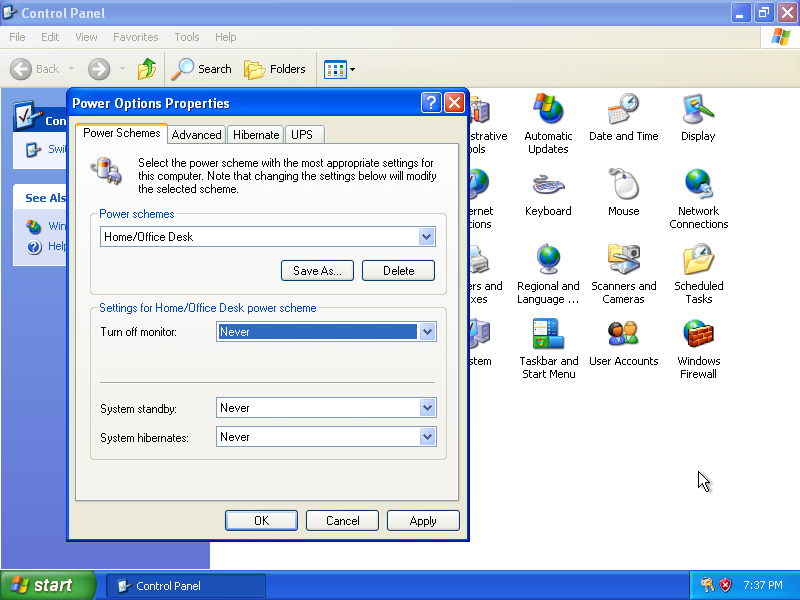
Close the Control Panel.
Loading the utilities CD
Switch to the next CD in the list by using the PCem right-click menu, or by hitting
Ctrl + Comma + Right Arrow and then Ctrl + Comma + Down Arrow.
Click the Start button and then click My Computer.
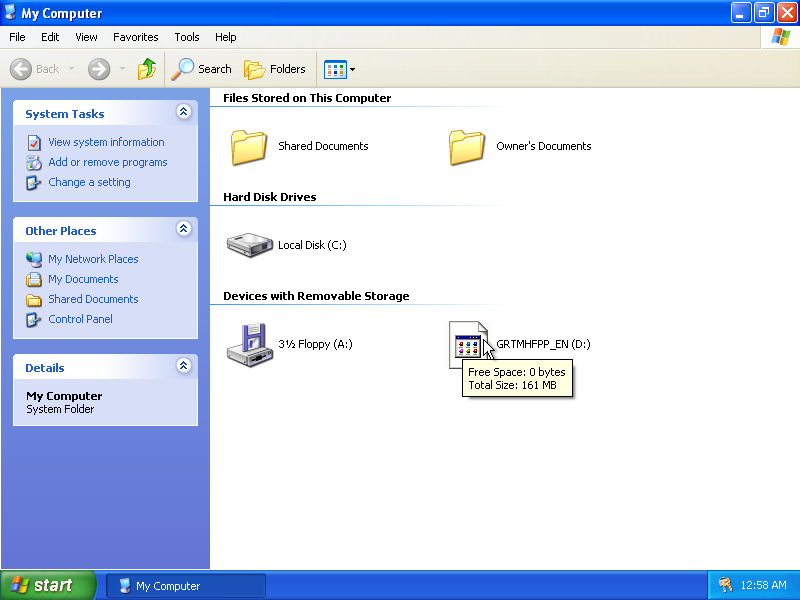
Double-click disk (D:) (volume label
GRTMHFPP_EN is just a leftover from the Windowx XP CD), press Ctrl + A and then Ctrl + C to copy all the files.

Close the window to get back to the Desktop and hit
Ctrl + V to paste.
Voodoo driver installation
Double-click amigasport3.0finalbuildfull and hit Install.
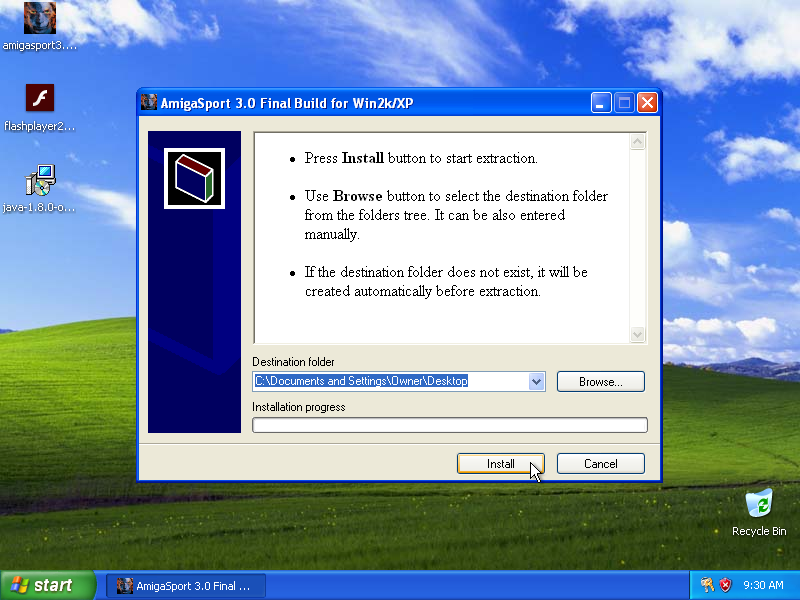
Open the AmigaSport 3.0 folder and double-click Driver Setup.
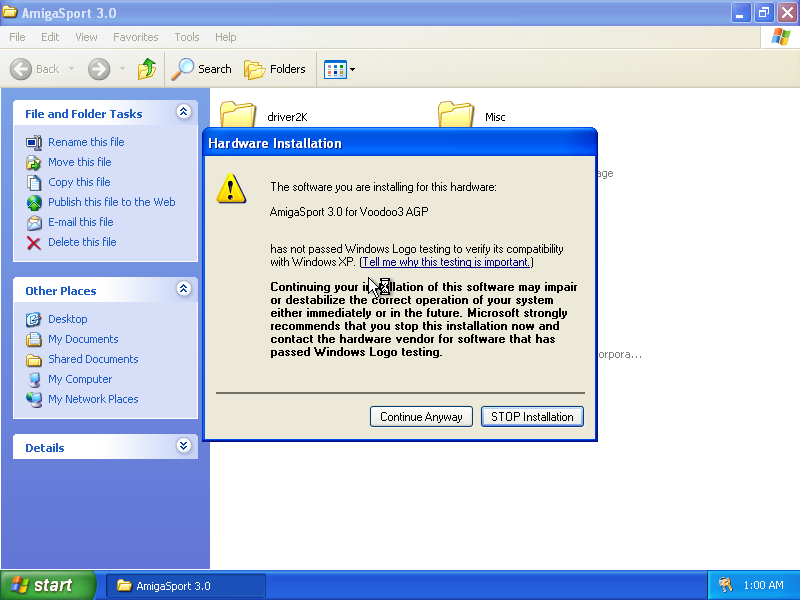
On this screen just hit Continue Anyway.
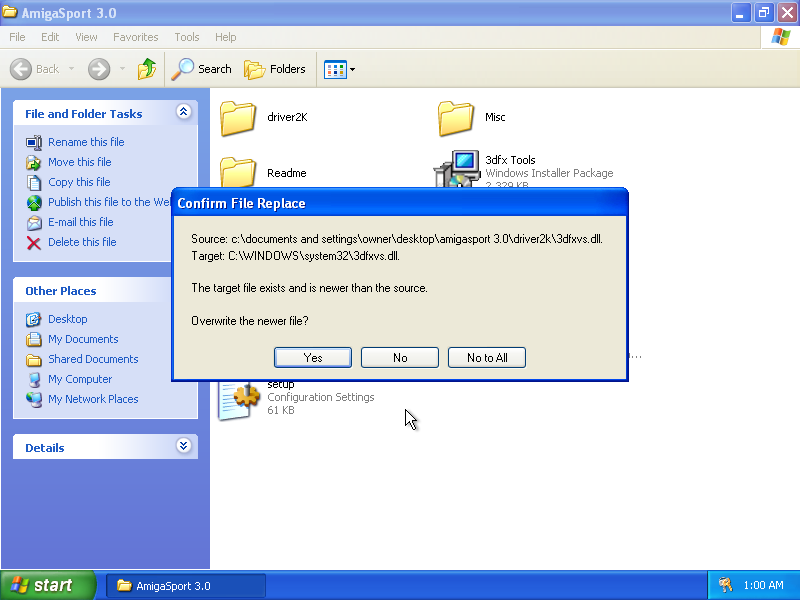
Hit Yes to overwrite the existing file in the OS.
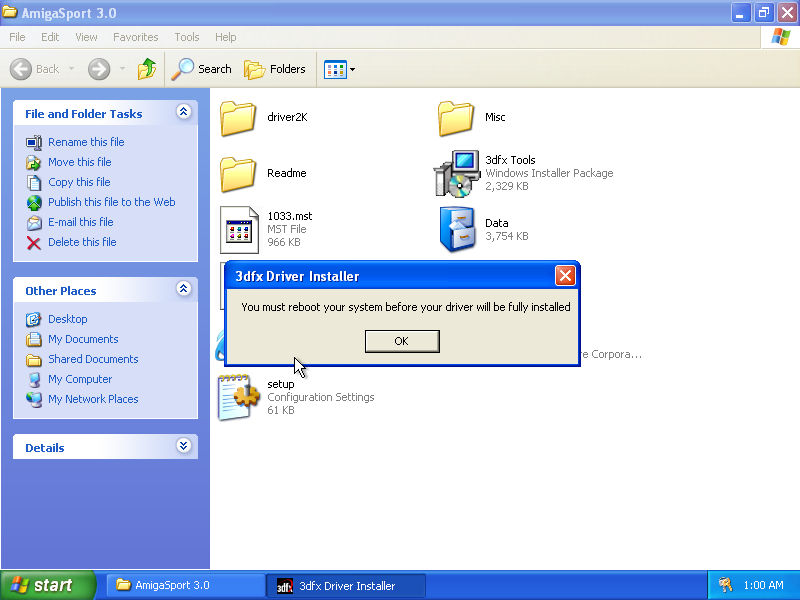
Click OK on the system reboot note dialog, then click the Start menu, Turn Off Computer, and Restart.
After the machine restarts, the resolution will be 640x480 again. Go back to the AmigaSport 3.0 folder and double-click setup.
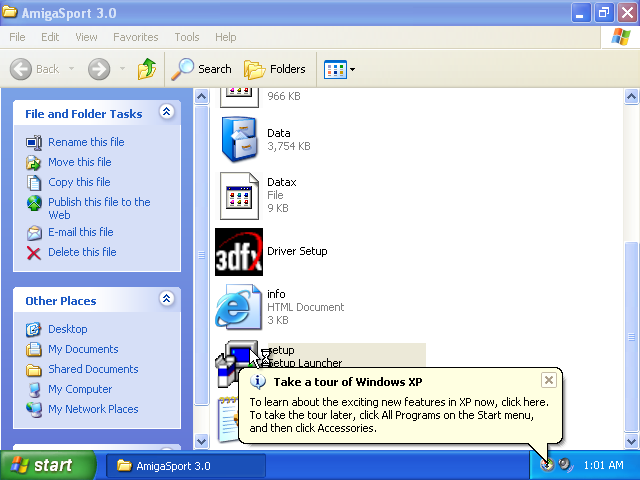
On the 3dfx Tools Setup dialog, click Next.
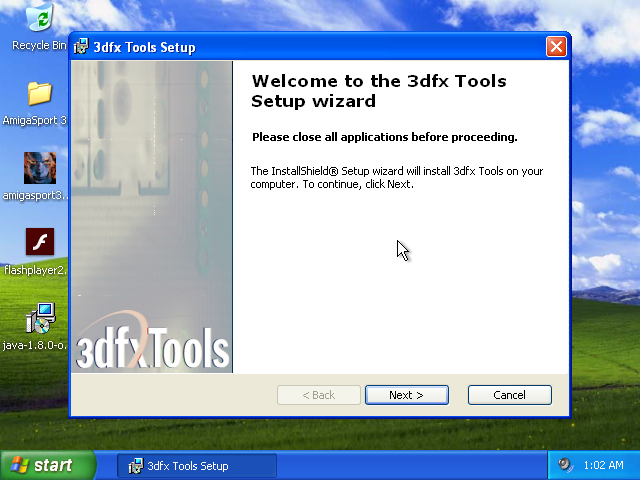
Accept the terms and click Next again, then click Install.
The Windows Logo testing warning will appear again, hit Continue Anyway. After the installation is done, click Finish.
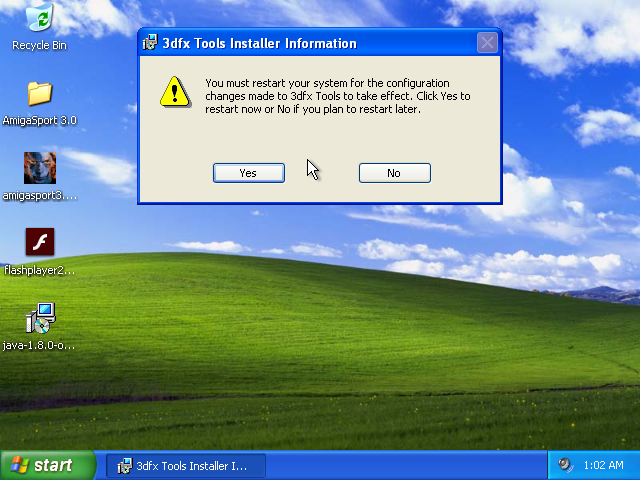
Restart the system again by going to Start -> Turn Off Computer -> Restart.
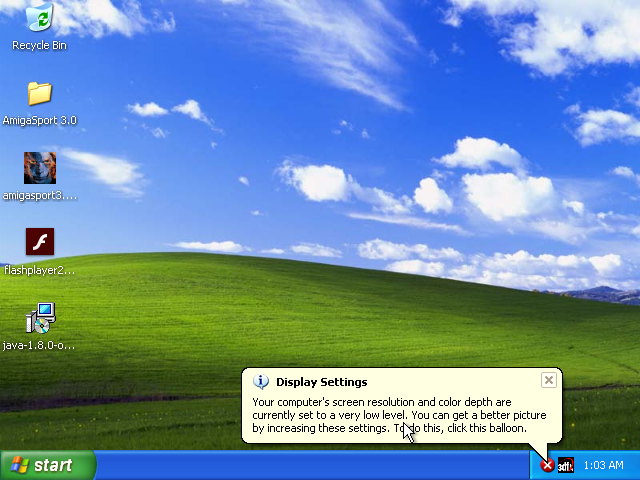
Click on the Display Settings popup notification that appears, and then click Yes on the confirmation dialog. The resolution will become 800x600 again, click Yes to keep the new settings.
Java Runtime Environment installation
Double-click java-1.8.0-openjdk-1.8.0.332-1.b09.ojdkbuild.windows.x86 and click Next on the Setup dialog.
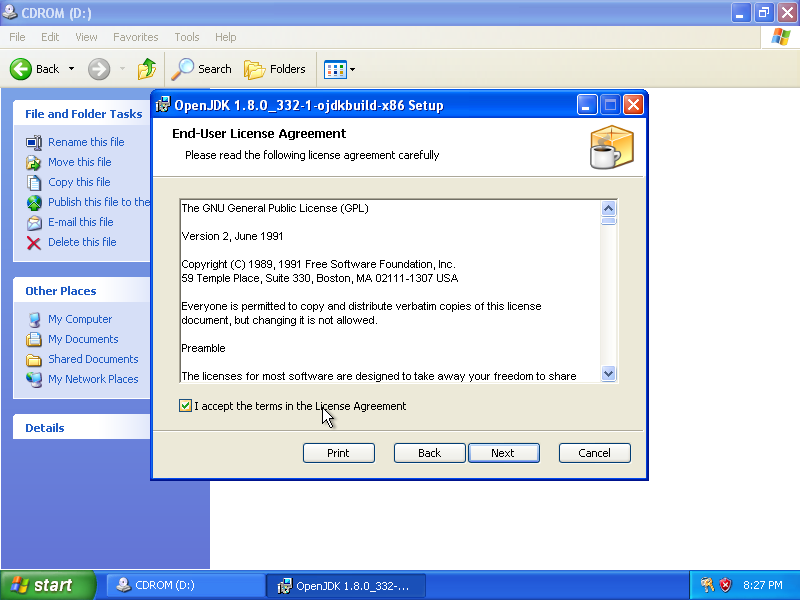
Accept the License Agreement terms and hit Next again.
Click the
+ button near OpenJDK Runtime to expand the list of installed features.
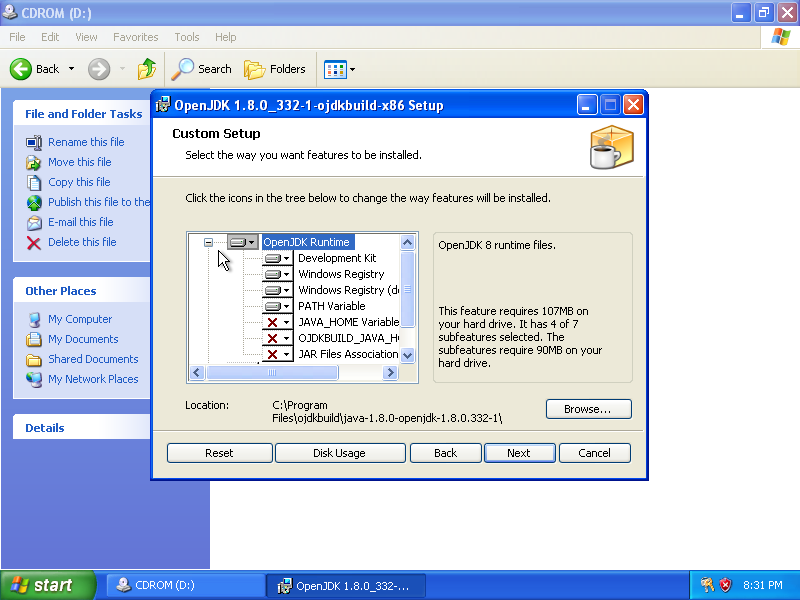
Click the dropdown arrow near Development Kit and select Entire feature will be unavailable.
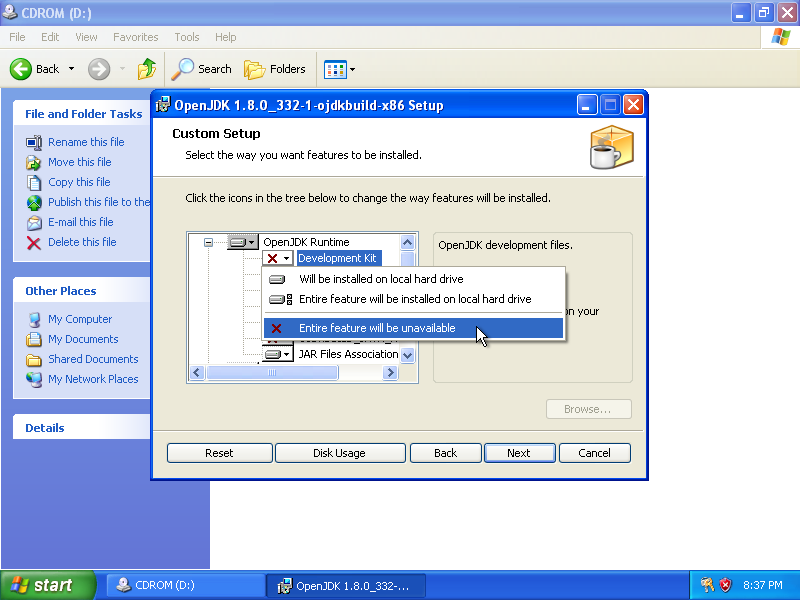
Click the dropdown arrow near JAR Files Association and select Will be installed on local hard drive.
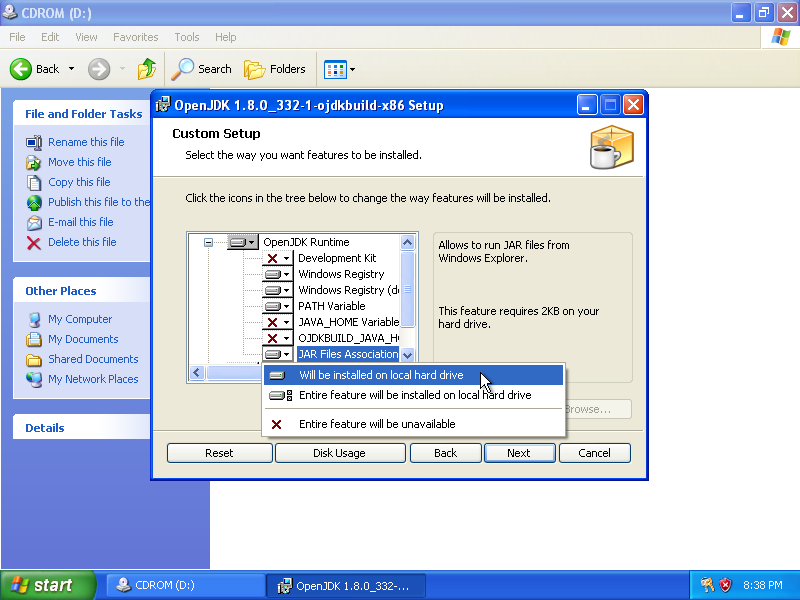
Hit Next and then Install. When it's done, click Finish.
Disabling notifications
Go back to the Control Panel (using the Start menu) and double-click Security Center.
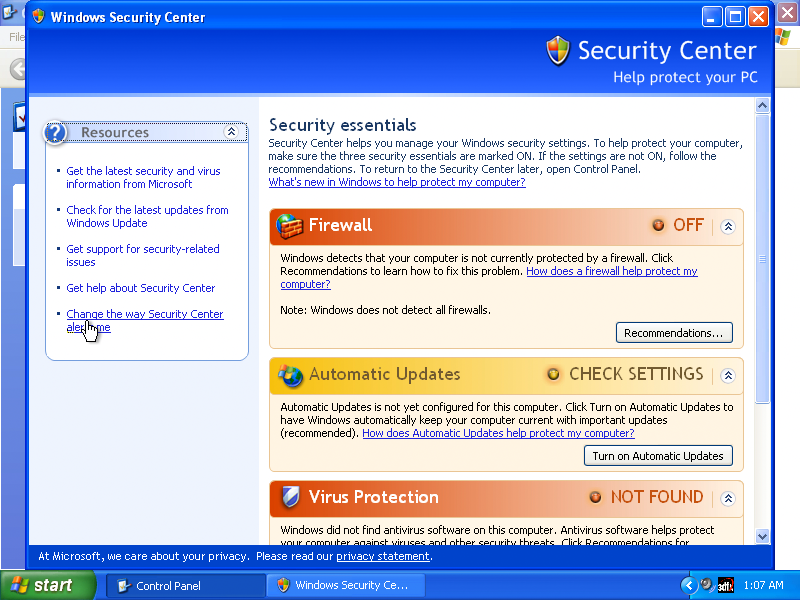
On the Resources list on the left, click Change the way Security Center alerts me.
Untick all checkboxes on the Alert Settings dialog and click OK. Close the Security Center dialog and the Control Panel.
Click Start, then Run..., type
regedit and click OK.
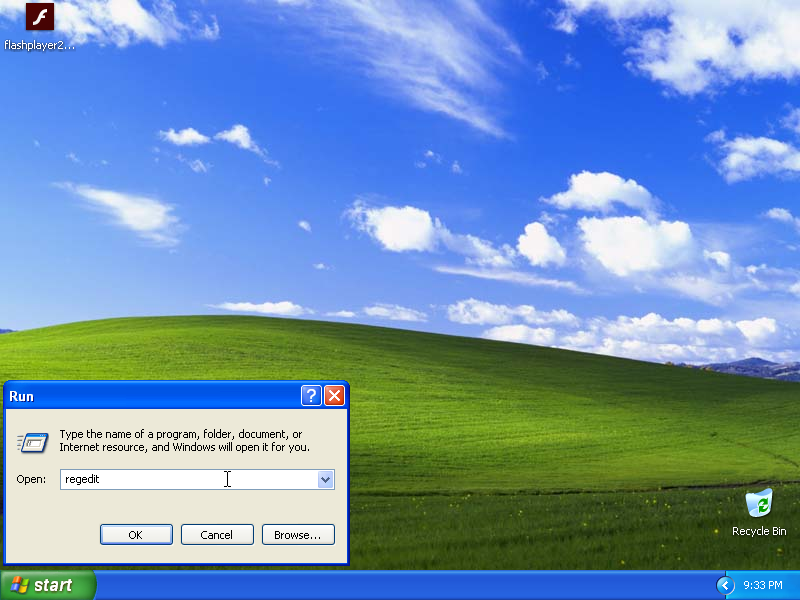
Navigate to HKEY_CURRENT_USER\Software\Microsoft\Windows\CurrentVersion\Explorer\Advanced and select it.

Right-click the right side pane, create a New DWORD Value, and then name it
EnableBalloonTips.
Double-click EnableBalloonTips, leave Value data at 0, and hit OK.
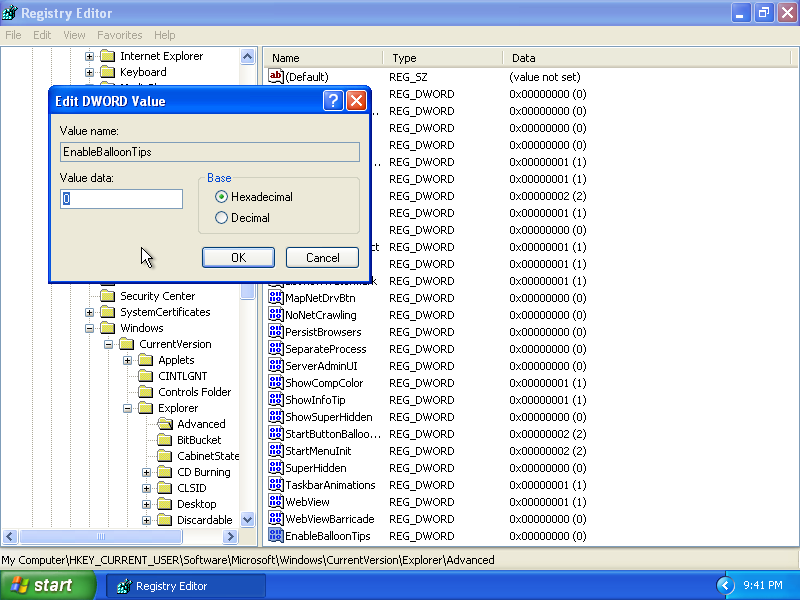
Close Registry Editor.
Right-click the speaker icon in the notifications area on the bottom right, select Adjust Audio Properties.
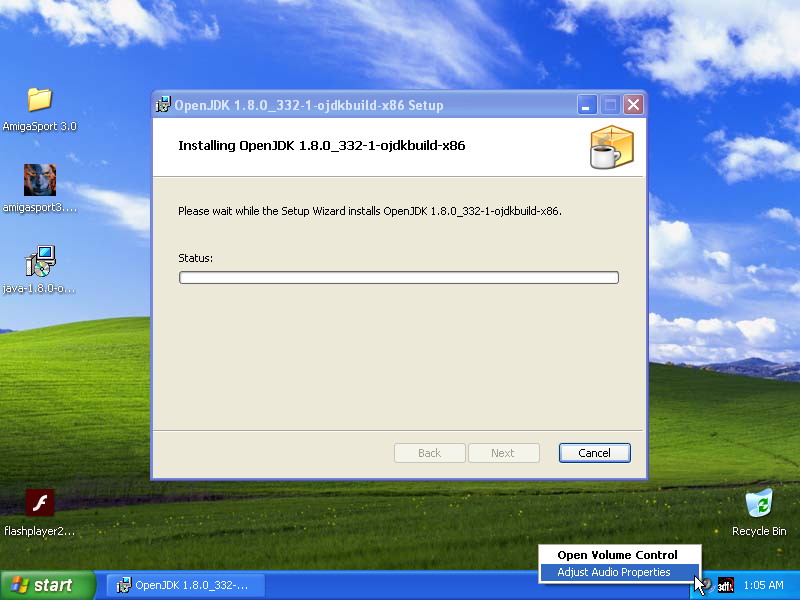
Click the Sounds tab and select System Notification in the Program events list.
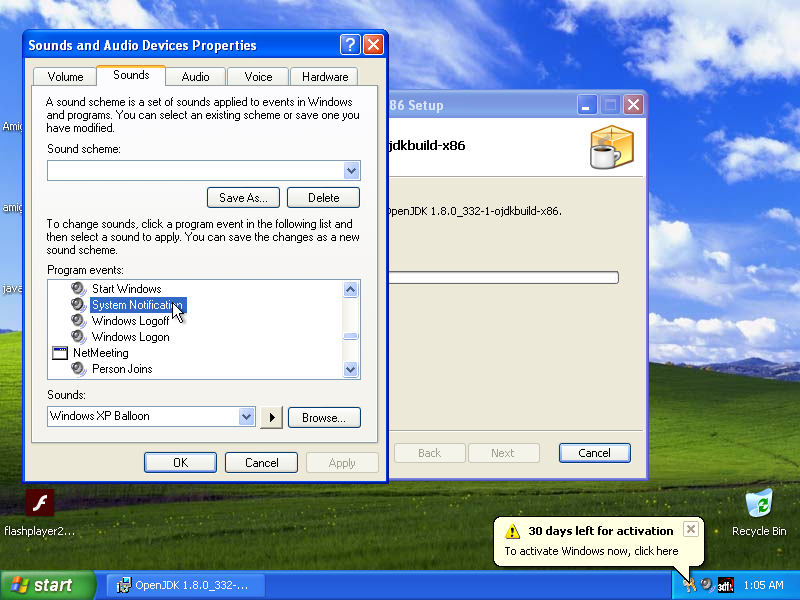
Click the Sounds drop-down list and select (None). Click OK.
Setup complete!
Select the AmigaSport 3.0 folder, amigasport3.0finalbuildfull and java-1.8.0-openjdk-1.8.0.332-1.b09.ojdkbuild.windows.x86 files, and hit
Shift + Delete. That will delete them without putting them into the Recycle Bin. Confirm the deletion by hitting Yes.
Click Start, then Turn Off Computer, and finally Turn off.
